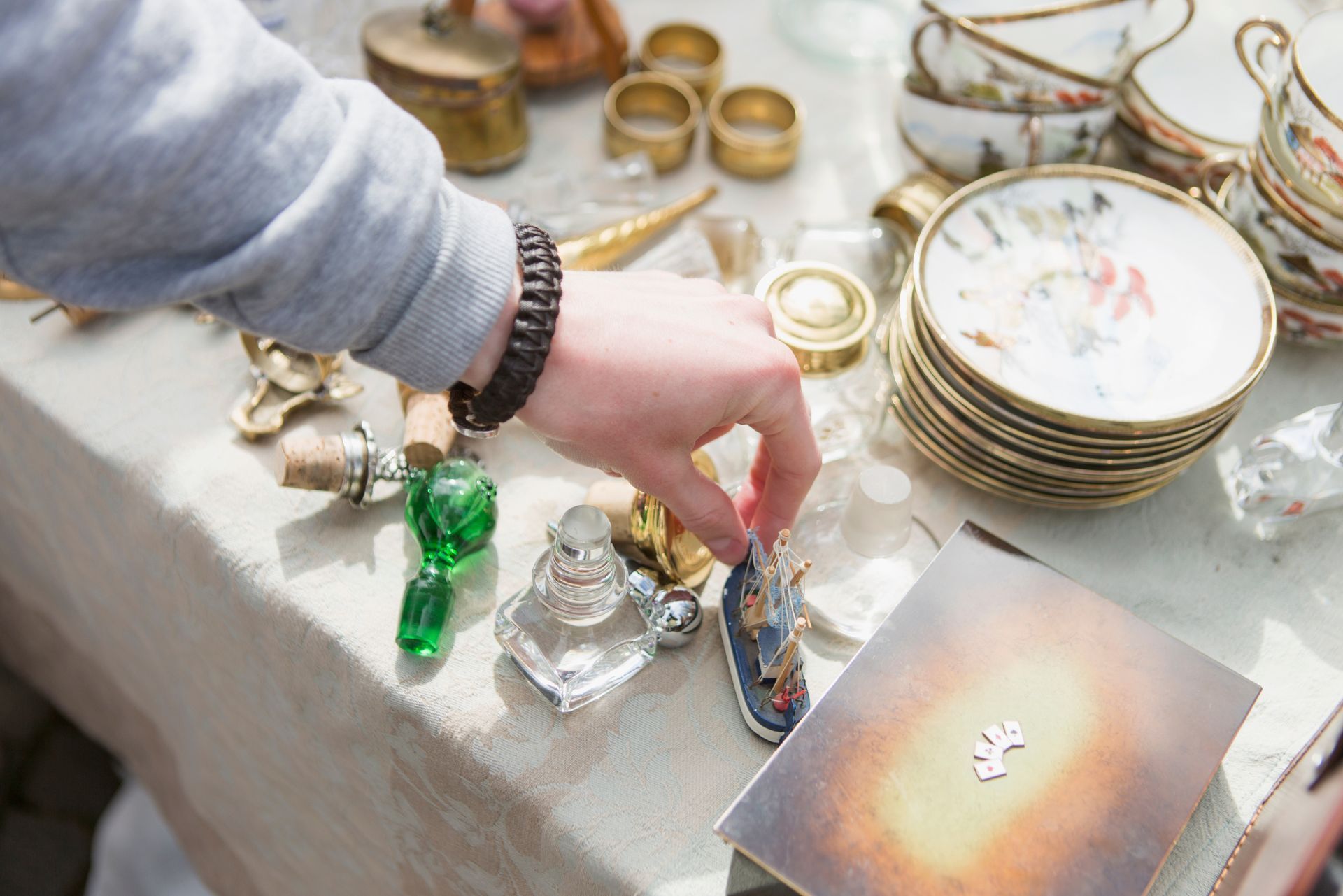Top 3 Recommended Policies

Collecting items can be a rewarding and enjoyable hobby, but it also comes with its own set of challenges, especially when it comes to protecting your valuable possessions. In Colorado, where the landscape is rich with culture and history, collectibles can range from vintage toys to fine art. This article delves into the ins and outs of collectibles insurance, providing essential information for collectors in the Centennial State.
Understanding Collectibles Insurance
Collectibles insurance is a specialized form of coverage designed to protect items that may not be adequately covered under standard homeowners or renters insurance policies. This type of insurance is crucial for collectors, as it ensures that their prized possessions are safeguarded against risks such as theft, damage, or loss. Unlike standard policies, collectibles insurance takes into account the unique value and condition of each item, providing tailored coverage that reflects their true worth.
What Qualifies as a Collectible?
Collectibles can encompass a wide array of items, including but not limited to:
- Artworks (paintings, sculptures, etc.)
- Antiques (furniture, jewelry, etc.)
- Coins and currency
- Stamps
- Sports memorabilia
- Vintage toys and games
Each of these categories can hold significant monetary and sentimental value, making them worthy of specialized insurance coverage. For instance, a rare comic book or a vintage baseball card can appreciate over time, sometimes fetching thousands of dollars at auction. Additionally, the emotional connection to these items often drives collectors to seek the best protection available, ensuring that their memories and investments are preserved for future generations.
Why You Need Collectibles Insurance
Many collectors assume that their items are covered under their standard home insurance policy. However, this is often not the case. Standard policies typically have limits on coverage for collectibles, and valuable items may require additional riders or endorsements to ensure adequate protection. Furthermore, the process of determining the value of collectibles can be complex, often necessitating appraisals from experts in the field to ensure that the insurance coverage matches the current market value.
Collectibles insurance offers peace of mind, allowing collectors to enjoy their hobby without the constant worry of potential loss. In the event of a disaster, such as a fire or flood, having the right insurance can mean the difference between recovering your losses and facing significant financial hardship. Additionally, many policies also cover items in transit, which is particularly important for collectors who frequently attend trade shows, auctions, or exhibitions. This added layer of protection ensures that even when items are on the move, they remain safeguarded against unforeseen events, allowing collectors to focus on their passion without fear.

Choosing the Right Policy
When it comes to selecting a collectibles insurance policy, there are several factors to consider. Not all policies are created equal, and understanding your needs is crucial for finding the right coverage.
Assessing Your Collection's Value
The first step in choosing a policy is to assess the value of your collection. This may involve appraisals from professionals who specialize in your specific type of collectible. Accurate valuations are essential, as they will determine the amount of coverage you need.
It’s advisable to have your collection appraised regularly, especially if you acquire new items or if the market value of existing items fluctuates. An up-to-date appraisal ensures that your policy reflects the current value of your collection. Additionally, maintaining detailed records of your items, including photographs and receipts, can be invaluable in the event of a claim. This documentation not only aids in proving ownership but also helps substantiate the value of your collectibles to your insurance provider.
Types of Coverage Available
Collectibles insurance policies can vary significantly in terms of coverage options. Here are some common types of coverage to consider:
- All-Risk Coverage: This type of policy covers a wide range of risks, including theft, accidental damage, and natural disasters.
- Named Perils Coverage: This policy only covers specific risks that are explicitly listed in the policy, such as fire or vandalism.
- Agreed Value Coverage: This ensures that in the event of a loss, the collector receives a predetermined amount, which can be beneficial for high-value items.
Understanding these options will help you make an informed decision about the best coverage for your collection. Furthermore, it’s essential to consider any additional endorsements or riders that may be available. For instance, some policies may offer coverage for items that are temporarily out of your possession, such as those on loan to galleries or exhibitions. This can provide peace of mind, knowing that your collectibles are protected even when they are not in your immediate care.
Moreover, be aware of the exclusions that may apply to your policy. Certain items, like those that are deemed to have a high risk of loss or damage, may not be covered under standard policies. Understanding these limitations will help you avoid surprises later on and allow you to explore specialized coverage options if necessary. Engaging with an
insurance agent who understands the nuances of collectibles can also provide valuable insights tailored to your unique collection.
Finding the Right Insurance Provider
Once you have a clear understanding of your needs and the type of coverage you require, the next step is to find an insurance provider that specializes in collectibles insurance. This can be a daunting task, but there are several strategies to simplify the process.
Researching Insurance Companies
Start by researching companies that offer collectibles insurance in Colorado. Look for providers with a solid reputation and positive customer reviews. It’s essential to choose a company that understands the unique needs of collectors and has experience in the field. Many insurance companies have dedicated teams that focus on collectibles, which can provide you with peace of mind knowing that your prized possessions are in capable hands.
Consider reaching out to local collector clubs or online forums for recommendations. Fellow collectors can provide valuable insights into their experiences with various insurance providers, helping you make a more informed choice. Additionally, attending local collectible shows or conventions can be a great way to network with other collectors and gather firsthand information about which insurance companies they trust and why. This community-driven approach can often lead to discovering hidden gems in the insurance market.
Comparing Quotes and Policies
Once you have a shortlist of potential insurance providers, request quotes from each. Be sure to compare not only the premiums but also the coverage limits, deductibles, and any exclusions that may apply. This comparison will help you identify the best policy for your specific needs. Pay close attention to the fine print, as some policies may offer lower premiums but come with significant limitations that could leave you vulnerable in the event of a claim.
Don’t hesitate to ask questions during this process. A reputable insurance agent should be willing to explain the details of the policy and help you understand what you’re paying for. Furthermore, inquire about any additional services they offer, such as appraisals or inventory management tools, which can enhance your overall insurance experience. Understanding the full scope of what each provider brings to the table can make a significant difference in your decision-making process, ensuring that you select a policy that not only meets your immediate needs but also supports your long-term collecting goals.
Maintaining Your Collectibles Insurance
After securing a collectibles insurance policy, it’s important to maintain it properly to ensure continued protection for your items. This involves regular reviews and updates as your collection evolves.
Regularly Update Your Inventory
Keeping an updated inventory of your collection is crucial. This should include detailed descriptions, photographs, and appraisals of each item. An organized inventory not only helps in filing claims but also assists in tracking the value of your collection over time.
Consider using digital tools or apps designed for collectors to streamline the inventory process. These tools can help you keep everything organized and easily accessible when needed. Some applications even offer cloud storage options, ensuring that your inventory is safe from physical damage or loss. Additionally, having a digital backup can be invaluable in the event of a disaster, allowing you to quickly recover your records and provide necessary documentation to your insurer.
Furthermore, it’s beneficial to categorize your items based on type, value, or acquisition date. This not only aids in organization but can also provide insights into trends in your collection, helping you make informed decisions about future purchases or sales.
Reviewing Your Policy Annually
As your collection grows or changes, so too should your insurance policy. It’s advisable to review your policy at least once a year to ensure that it still meets your needs. This review should include assessing the value of your collection and making any necessary adjustments to your coverage.
Additionally, if you acquire high-value items or if the market value of your collectibles increases significantly, you may need to increase your coverage limits to protect your investment adequately. Engaging with a professional appraiser can provide you with an accurate assessment of your collection’s worth, which can be particularly useful during these reviews. Moreover, staying informed about market trends and fluctuations can help you anticipate changes in value, ensuring that your policy remains relevant and effective.
It’s also wise to keep an eye on the terms and conditions of your policy, as insurance providers may update their offerings or change coverage options. Being proactive in understanding these changes can prevent any surprises down the line and ensure that you are getting the best possible protection for your beloved items.

Common Myths About Collectibles Insurance
Despite the importance of collectibles insurance, several myths and misconceptions can lead to misunderstandings. Addressing these myths can help collectors make informed decisions about their insurance needs.
Myth: Homeowners Insurance Covers Collectibles
One of the most prevalent myths is that homeowners insurance provides adequate coverage for collectibles. While some policies may offer limited coverage, they often fall short of protecting high-value items. Collectibles insurance is specifically tailored to address these gaps. For instance, many homeowners policies have sub-limits on certain categories of personal property, meaning that even if your collectibles are technically covered, you may only receive a fraction of their true value in the event of a loss. This can be particularly concerning for collectors of rare coins, vintage toys, or fine art, where the market value can far exceed these limits.
Moreover, homeowners insurance typically covers loss due to specific perils such as fire or theft, but may not cover damage from other incidents like accidental breakage or natural disasters. Collectibles insurance often includes broader coverage options, ensuring that your prized possessions are protected against a wider range of risks. Understanding these nuances can save collectors from significant financial loss and provide peace of mind.
Myth: All Collectibles Insurance Policies Are the Same
Another common misconception is that all collectibles insurance policies provide the same coverage. In reality, policies can vary widely in terms of what they cover and the limits they impose. It’s essential to read the fine print and understand the specifics of your policy. Some policies may include coverage for restoration costs, while others might not, leaving collectors vulnerable if their items are damaged. Additionally, the process for filing claims can differ significantly between insurers, with some offering more streamlined services than others.
Furthermore, the valuation methods used by insurance companies can also differ. Some may offer actual cash value, which factors in depreciation, while others provide agreed value coverage, ensuring that collectors receive the full insured amount in the event of a loss. This distinction can have a profound impact on the financial outcome after a claim. Therefore, it's crucial for collectors to work closely with an insurance agent who specializes in collectibles to tailor a policy that meets their unique needs and provides comprehensive protection for their valuable items.
Claims Process for Collectibles Insurance
In the unfortunate event that a collectible is lost, damaged, or stolen, knowing how to navigate the claims process is vital. Understanding the steps involved can help ensure a smoother experience when filing a claim.
Documenting the Loss
The first step in filing a claim is to document the loss thoroughly. This includes gathering any evidence, such as photographs of the item, receipts, and appraisals. Having this information readily available will streamline the claims process and support your case.
Additionally, it’s important to report the loss to local authorities if applicable, especially in cases of theft. A police report can serve as crucial documentation when filing your claim.
Moreover, consider creating a detailed inventory of your collectibles, including descriptions and valuations. This can be beneficial not only for claims but also for future insurance needs. Regularly updating this inventory can help you stay organized and ensure that all items are adequately covered under your policy.
Contacting Your Insurance Provider
After documenting the loss, contact your insurance provider as soon as possible. They will guide you through the claims process and inform you of any specific requirements they may have. Be prepared to provide all necessary documentation and answer any questions they may have.
Following up regularly can help ensure that your claim is processed in a timely manner. Keep records of all communications with your insurance provider for future reference.
Additionally, familiarize yourself with your policy’s coverage limits and exclusions before contacting your provider. Understanding these details can help you set realistic expectations regarding the outcome of your claim. If your claim is denied or you feel the settlement offer is insufficient, don’t hesitate to ask for clarification or appeal the decision, as many insurers have a formal appeals process in place to address such situations.
Conclusion
Collecting can be a fulfilling passion, but it also requires careful consideration when it comes to protecting your investments. Colorado collectibles insurance offers a tailored solution for collectors, ensuring that their valuable items are safeguarded against unforeseen events.
By understanding the nuances of collectibles insurance, assessing the value of your collection, and choosing the right policy, collectors can enjoy their hobby with confidence. Regularly updating your inventory and reviewing your policy will further enhance your protection, allowing you to focus on what truly matters—your collection.
In a state as vibrant and diverse as Colorado, the world of collectibles is as expansive as the Rocky Mountains themselves. With the right insurance in place, collectors can explore their passions without fear, knowing that their treasures are well protected.
Contact Us
Phone
Location

